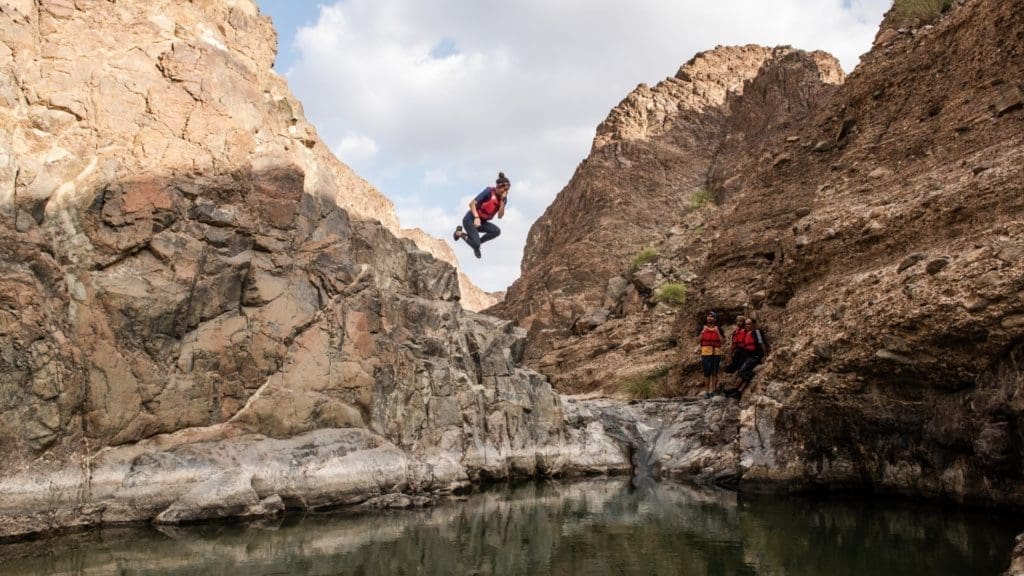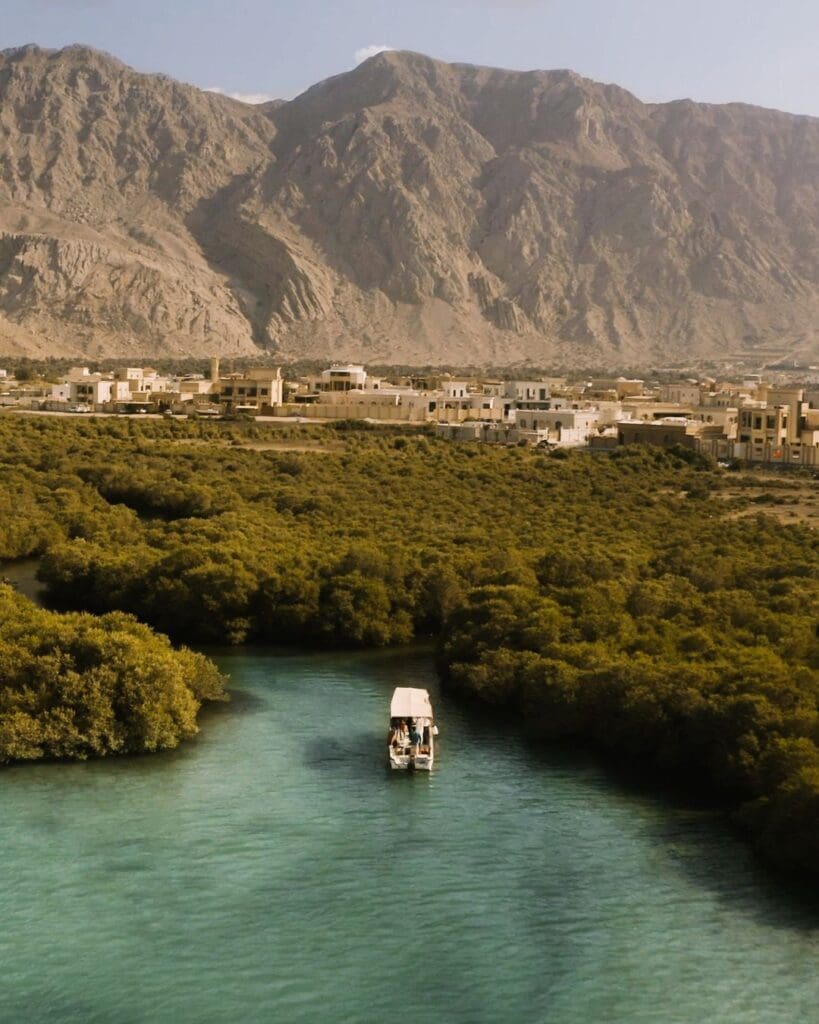Mangrove Kayaking in Ras Al Khaimah: All You Need to Know
Table of Contents The Role Mangroves Play in Ras Al KhaimahYour Guide to Kayaking in the Mangroves of Ras Al…

When most people think of Ras Al Khaimah, they picture dramatic mountains, golden deserts, and pristine beaches. Yet beyond these landscapes lies a living world shaped by rare plants and resilient animals that have quietly adapted to one of the region’s most diverse environments.
The emirate’s varied terrain makes it a sanctuary for species that represent the heart of the biodiversity in the United Arab Emirates (UAE). From native trees that anchor the desert to birds that thrive along mangrove shores, each ecosystem contributes to a delicate balance that defines Ras Al Khaimah’s natural identity.
Exploring plants in the UAE through the lens of Ras Al Khaimah reveals more than survival stories. It uncovers the quiet strength of nature in arid lands and the enduring connection between the environment and local heritage.
We created this guide to help you discover the plants and creatures that make its landscapes even more extraordinary.
Key Takeaways
|
Table of Contents
The Unique Ecosystems of Ras Al Khaimah
Native and Introduced Species You’ll Find in Ras Al Khaimah
How Flora and Fauna Shape Ras Al Khaimah’s Natural Identity
Experience Ras Al Khaimah’s ‘Wild’ Side: Where Visitors Can See Them
Discover Nature, Discover Ras Al Khaimah
Ras Al Khaimah’s geography is more than an arid desert and sea‐edge. The emirate’s landscapes form three distinct ecosystems, each supporting its own mix of plants and wildlife. Together, they create a rich natural tapestry that makes the northernmost emirate a standout destination for biodiversity.

The desert regions of Ras Al Khaimah are characterized by vast sandy plains and scattered rocky outcrops. Here, vegetation is adapted to intense heat and scarce rainfall.
Wild mammals and nocturnal creatures that inhabit the desert benefit from the cover of shrubs and sparse trees. Migratory birds may also use the desert fringes as stopover zones.

Here, the emirate’s terrain rises into the Hajar Mountains and winds down into seasonal watercourses (wadis). These zones receive slightly more rainfall and support greener vegetative pockets where native trees, wild herbs and a wider variety of birds thrive.
Visitors hiking or walking through trails may spot clusters of vegetation clinging to slopes or lining rocky gullies, offering contrast to the desert floor below.

Stretching 68 kilometers of coastline, Ras Al Khaimah’s coast is home to salt-tolerant mangroves and intertidal salt flats that support a vibrant ecosystem of marine life and shorebirds.
For example, mangrove forests provide a quiet refuge for flamingos, cormorants, and other migratory birds, while fish and crustaceans thrive among the exposed roots.
Ras Al Khaimah’s natural habitats are home to more life than most visitors expect.
The emirate shelters resilient plants that endure desert winds and rare animals that move quietly through its mountains, plains, and coasts. Together, they form an ecosystem that showcases the story of balance and adaptation, continuing to thrive in the northernmost corner of the UAE.

Much of Ras Al Khaimah’s landscape is defined by the UAE plants that have evolved to withstand arid conditions.
Native trees and desert blooms conserve water efficiently, while others grow in saline soils or rocky mountain slopes. These plants do more than survive; they sustain animal life, stabilize the soil, and shape the emirate’s visual character.
Here are some of the plants that exist in certain parts of the emirate:
| Common Name | Scientific Name | Ecosystem / Habitat |
| Ghaf Tree | Prosopis cineraria | Desert plains, wadis |
| Sidr Tree | Ziziphus spina-christi | Wadis, foothills |
| Desert Hyacinth | Cistanche tubulosa | Sandy desert |
| Date Palm | Phoenix dactylifera | Cultivated oases, coastal zones |
| Mangrove (Grey Mangrove) | Avicennia marina | Coastal salt flats, lagoons |

Beyond its resilient flora, Ras Al Khaimah provides refuge to rare and regionally significant animals. From mountain dwellers to coastal species, these creatures rely on the emirate’s varied terrain and its network of protected habitats.
| Common Name | Scientific Name | Ecosystem / Habitat | Rarity / IUCN Status |
| Arabian Oryx | Oryx leucoryx | Desert | Vulnerable |
| Arabian Tahr | Arabitragus jayakari | Hajar Mountains | Endangered |
| Arabian Sand Gazelle | Gazella marica | Desert plains | Vulnerable |
| Pharaoh Eagle-Owl | Bubo ascalaphus | Rocky outcrops and mountains | Least Concern |
| Green Sea Turtle | Chelonia mydas | Coastal waters | Least Concern |
Every desert bloom, mangrove root, and mountain-dwelling animal contributes to the story of Ras Al Khaimah’s natural heritage. The emirate’s ecosystems are not separate worlds, but interconnected habitats that sustain one another, even under the UAE’s extreme climate.
Native plants that grow in the UAE, such as the ghaf and sidr trees, are more than botanical icons. They anchor the soil, prevent desert erosion, and provide shade and shelter to small mammals and birds. Desert hyacinths and wild herbs, in turn, feed pollinators that sustain the cycle of growth through every season.
Animals also play vital roles. Gazelles disperse seeds across dunes, mountain birds nest in tree hollows, and mangrove crabs help aerate the soil in tidal wetlands. These interactions sustain Ras Al Khaimah’s natural equilibrium.
Beyond ecology, this biodiversity holds cultural significance. Generations of Emiratis have used native plants in traditional medicine and cuisine, while animals such as the oryx and falcon remain symbols of strength and grace in local heritage. Today, these same species stand as reminders of how deeply nature shapes identity.
Ras Al Khaimah’s commitment to protecting this heritage is reflected in ongoing habitat preservation and eco-tourism initiatives, ensuring that its living landscapes remain part of the emirate’s story for years to come.
Ras Al Khaimah eco-tourism is about connection, not collection. Appreciating the simple joys of walking through shaded wadis, listening for mountain birds, or quietly watching life unfold along the shore is what it’s all about.
Visitors are encouraged to protect these fragile habitats by staying on marked trails, leaving plants untouched, and choosing local guides who bring the landscape’s stories to life.
Ready to explore Ras Al Khaimah’s wild side? Here are some of the best places to experience its living landscapes firsthand:

A favorite among hikers and families, Wadi Shawka is a living classroom of desert and mountain ecology. Seasonal rain brings a temporary burst of green, with hardy shrubs and wild herbs dotting the terrain.
If you’re planning to go birding in Ras Al Khaimah, you’ll be happy to know that birdwatchers recently spotted species such as the desert lark, white-eared bulbul, Hume’s wheatear and house sparrow.

As you ascend Jebel Jais, you’ll notice the landscape shift from dry foothills dotted with acacia (Vachellia tortilis) and Desert Moringa (Moringa peregrina) to cooler zones that sustain entirely different plant life.
Above 1,700 meters, hikers encounter the Artemisia steppe, a rare and fragile plant community found only on the UAE’s highest peaks. The following flora also thrive in the mist-laden air of Jebel Jais:
This unique ecosystem is vital for biodiversity, sheltering endemic mountain species and preserving plants that have long been valued in traditional medicine.

Along the coast, Al Jazirah Al Hamra’s mangrove forests stand as one of Ras Al Khaimah’s most peaceful natural spots. The dominant tree is the grey mangrove (Avicennia marina), which thrives in this harsh tidal environment.
Visitors can explore these calm waterways by kayak or paddleboard, with tours offered from resorts such as Anantara Mina Al Arab. Gliding between the mangrove roots, you may spot herons, flamingoes, and other coastal birds feeding in the shallows. Beyond their beauty, these mangroves play a vital role in protecting the shoreline, nurturing marine life, and supporting Ras Al Khaimah’s coastal ecosystems.
UAE desert plants survive through remarkable adaptations. Many store water in their roots or stems, grow small waxy leaves to reduce evaporation, and spread deep roots to reach underground moisture. These natural strategies allow native flora to thrive under the UAE’s intense sun and arid conditions.
Yes, there are. Some plants in the UAE can be harmful or invasive. For example, the apple of Sodom (also known as Calotropis procera) and the desert rose (Nerium oleander) are toxic and may cause skin blisters, corneal damage, or worse. There are also invasive species like Prosopis juliflora that threaten native flora by overtaking the desert landscapes.
The UAE preserves rare plants through protected area designations, seed banks, red-list assessments and coordinated efforts by environmental agencies. Over 8 percent of native plants have been evaluated as endangered.
Yes, but timing affects what you’ll observe. Many plants respond to winter rains, and migratory birds use coastal and mountain zones between autumn and spring. Luckily, Ras Al Khaimah’s landscapes allow nature observation throughout the year.
Ras Al Khaimah’s deserts, mountains, and mangroves reveal a living landscape where nature and heritage coexist in harmony. Each encounter tells a story of resilience and beauty, from spotting native wildlife to walking beneath ancient trees
Plan your next journey and experience Ras Al Khaimah’s “wild” side responsibly.
Table of Contents The Role Mangroves Play in Ras Al KhaimahYour Guide to Kayaking in the Mangroves of Ras Al…
Table of Contents The Geology of Jebel JaisMountains of Time: Exploring the History of Jebel JaisModern Life in an Ancient…
Table of Contents What Is a Digital Detox?A Digital Detox Retreat in Ras Al KhaimahGet Active with Hiking, Biking or…
Table of Contents Jebel Jais Al Marjan IslandAl Jazeera Al HamraAl Wadi DesertMangrove CoastlineWadi ShawkaYou can’t visit a place without photos…
Table of Contents 1. Jebel Jais2. Wadi Shawka3. Al Wadi Desert Reserve4. Flamingo Beach5. Ras Al Khaimah’s Mangroves6. Wadi Bih7.…
Table of Contents 1. Desert Safari2. Desert Camping3. Outdoor Desert Activities4. Camel Riding or Trekking5. Wildlife Feeding Experience at The…